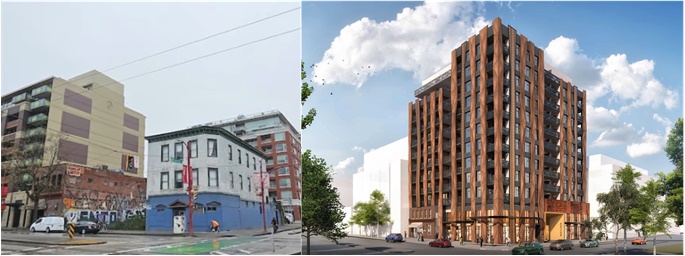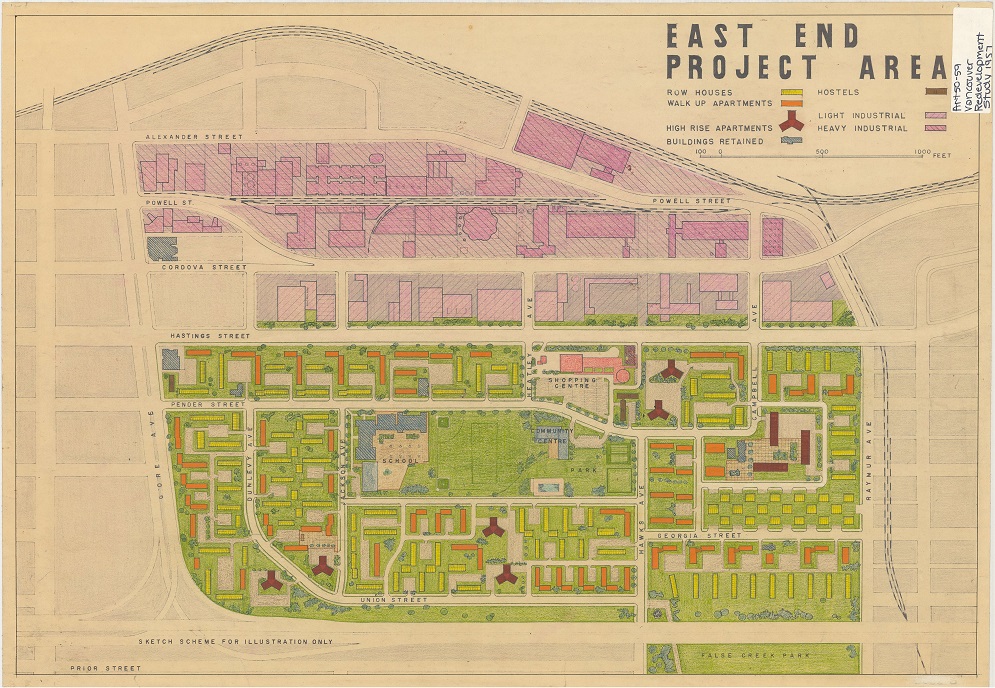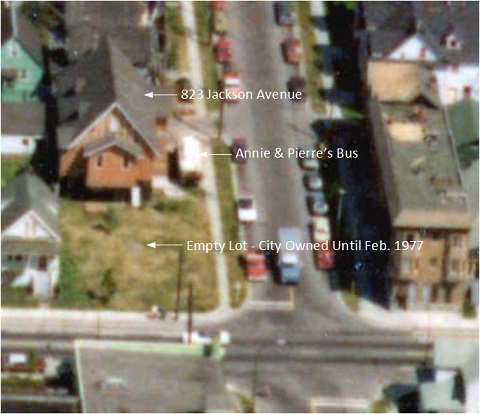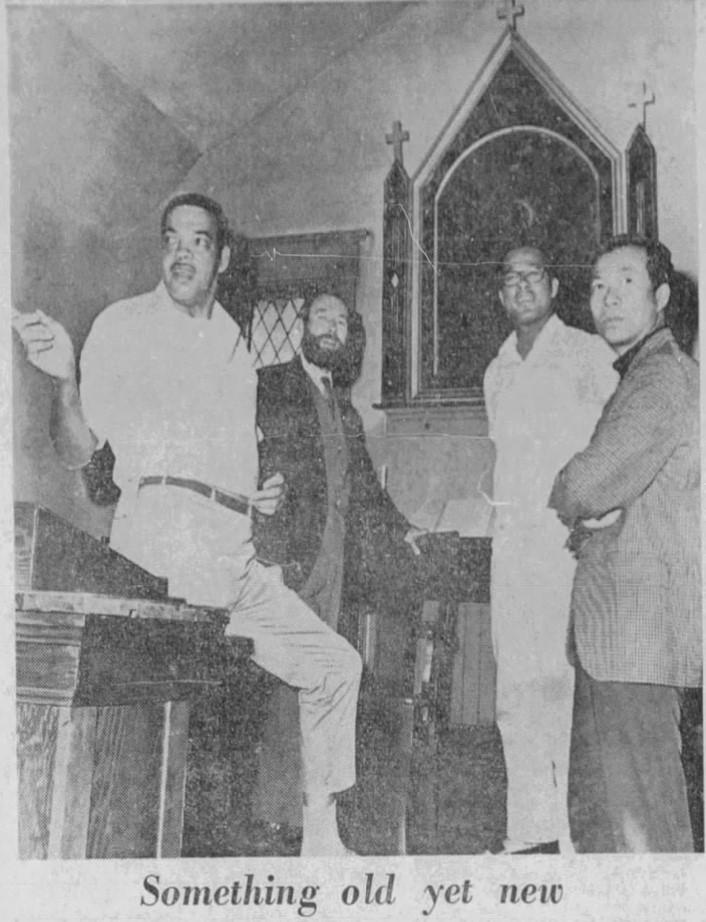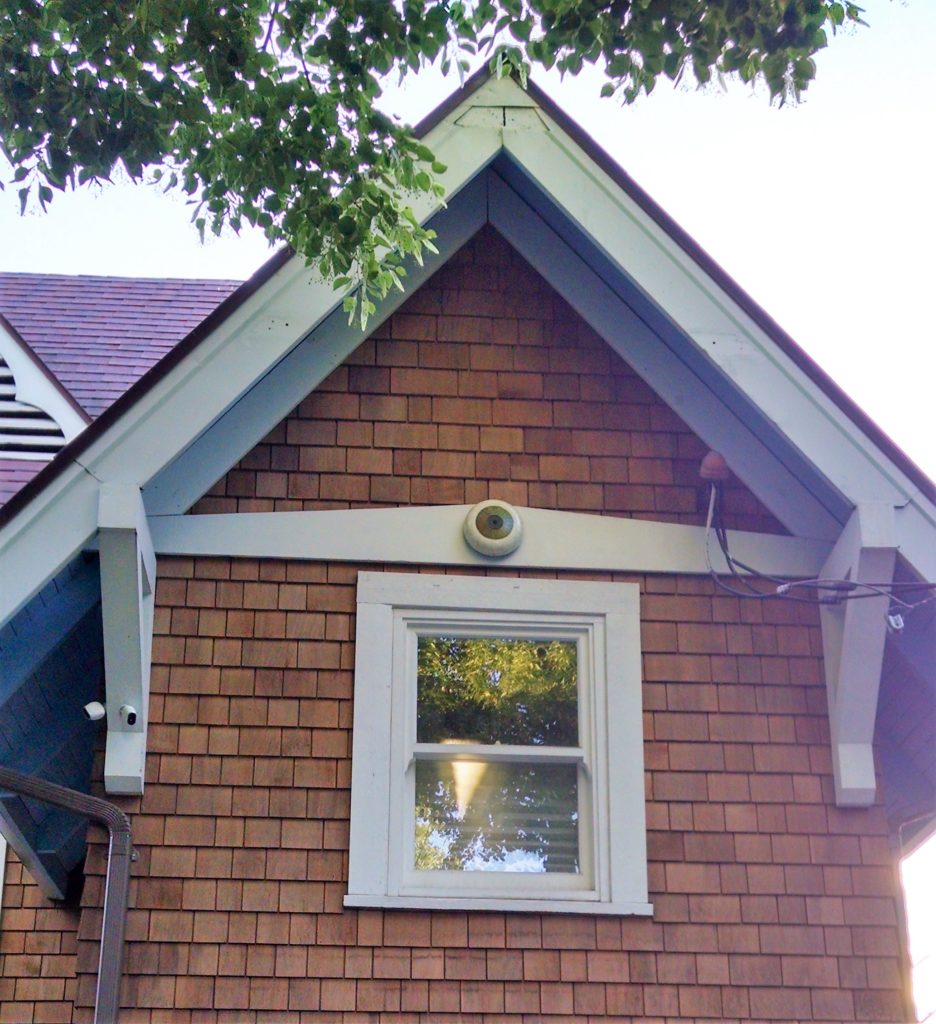
In 1973, after the new viaduct ramps had been built and the houses and businesses in the block between Main, Gore, Union and Prior had been demolished to build them, a restaurant at 730 Main street revived the name “Hogan’s Alley”, that had not been actively used for long time. Puccini’s restaurant, an established restaurant on Main between Union and East Georgia started a night club on the ground floor and named it Hogan’s Alley. The Vancouver Sun notes: “Nice to see that Puccini’s, the popular-priced spaghetti house on Main, uses an old Vancouver name for its lounge: Hogan’s Alley.” [Vancouver Sun, Nov. 2, 1973]. “Hogan’s Alley is designed as a middle-of-the-evening or early-morning listening spot and, in the best tradition of jazz clubs, there is no dance floor. It is part of the new entrance and foyer of the Puccini spaghetti house on Main and also serves as a comfortable station until it’s your turn to eat.” [Vancouver Sun, Oct. 12, 1973].
The Hogan’s Alley music venue operated for over two decades and hosted a large number of musical acts in genres including jazz, blues, country and folk. In early 1994 Puccini’s closed and the music stopped. The last published announcement of music acts at Hogan’s Alley was on April 29, 1994 [Province, Apr. 29, 1994]. Later that year the Vancouver Sun noted: “Puccini’s, the long-time home of Italian foods above 730 Main … has been closed for months, presumably a victim of the recession and the competition from our over-supply of Italian food places. The place never really stayed ahead of the game when John Teti and family sold to move on to bigger things … If you are sentimental about this Hogan’s Alley spot, there is always the new Brickhouse bar, at street level, where pool is shot, drinks consumed but no food eaten.” [Vancouver Sun, Oct. 20, 1994]. “The building that housed Puccini’s Italian restaurant at 730 Main is on the market for $695,000. Puccini’s, which opened in 1915, has been closed for more than a year, according to Leo Chow who runs the Brickhouse at Hogan’s Alley, a pub with pool tables and a dart board, in the same building” [Vancouver Sun, May 19, 1995].
Today the building at 730 Main street is part of a larger parcel, 796 Main Street, that includes an empty lot and the building at the corner of Main and Union. The Hogan’s Alley Society has submitted a development permit application for 796 Main St. that calls for the construction of a 128-ft-tall, 12-storey building with 109 social housing unit on top of about 7,400 sq. ft. of retail/restaurant space on the ground and second levels.
